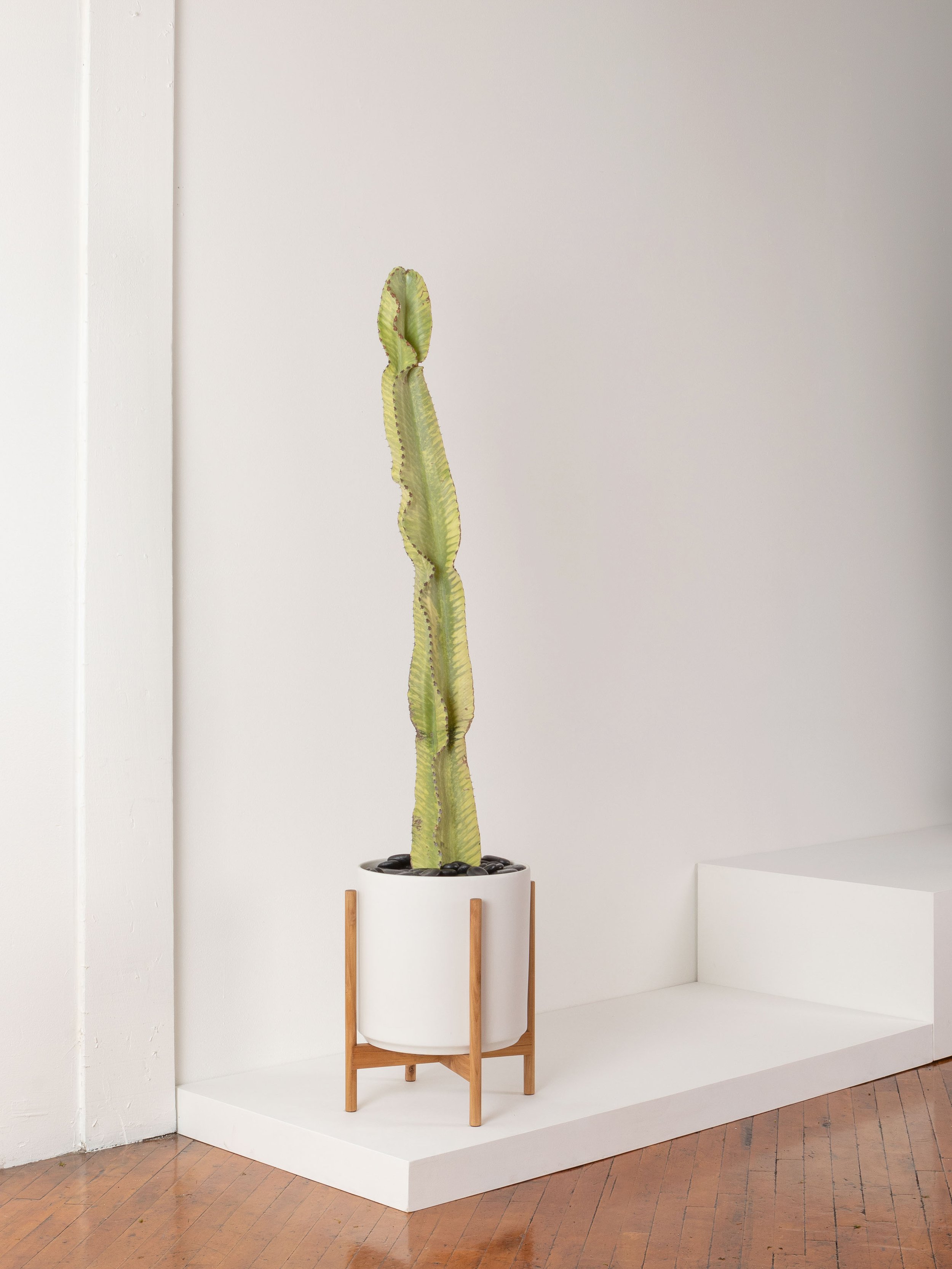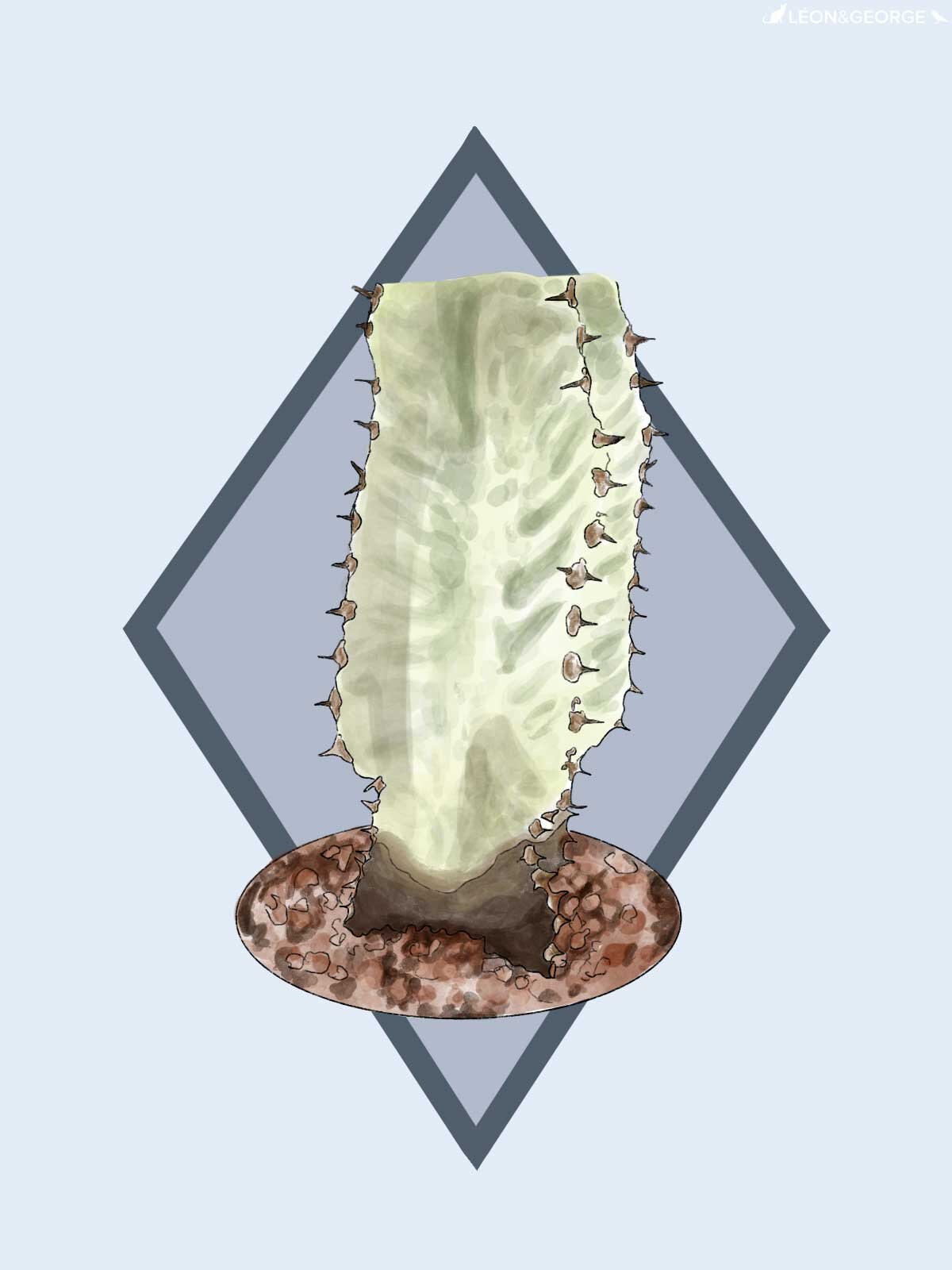The Jade Cactus, scientifically known as Euphorbia Ingens and also commonly referred to as the Candelabra Cactus or Candelabra Tree, is a stunning and low-maintenance succulent that adds a touch of desert elegance to any indoor space. With its robust columnar structure and deep green coloring, the Jade Cactus is a popular choice amongst interior designers and design enthusiasts alike. Read up on the basics of how to care for the Euphorbia Ingens, from water and light requirements to propagation and everything in between.
Light requirements
The Euphorbia Ingens has flexible light preferences, making it a versatile choice for various lighting conditions. While bright indirect light and even some direct sunlight is ideal, they can also adapt to medium levels of light, though less light will significantly slow their growth rate. Place your Euphorbia Ingens near a south-facing or west-facing window for optimal light conditions, or even outdoors in a semi-shaded area (too much direct sunlight may scorch your cactus!).
Choosing the best soil
Choose a well-draining cactus or succulent potting mix for your Euphorbia. This blend typically consists of sand, potting soil, and perlite or pumice. The mix allows for plenty of drainage and prevents moisture-related issues such as root rot.
Watering - less is more
Euphorbias are drought-resistant and the Euphorbia Ingens is no exception: it is essential to allow it to dry out between waterings. Water the plant infrequently and sparingly, allowing the top inch of soil to become dry before the next watering. Depending on placement and time of year, your plant may only need watering once per month! Overwatering can lead to root rot, so exercise caution and prioritize a well-draining pot and soil mix.
Temperature and humidity
Euphorbia Ingens thrive in average household temperatures between 65 to 75 degrees Fahrenheit. They can tolerate cooler temperatures down to 55 degrees Fahrenheit, but avoid prolonged exposure to temperatures below 50 degrees Fahrenheit. Maintain consistent temperatures to prevent stress and maintain your Euphorbia’s health for years to come!
The perfect fertilizing routine
Feed your Euphorbia during its growing season (spring and summer) with a controlled-release succulent fertilizer or a diluted, balanced liquid fertilizer. Use a 10-10-10 fertilizer for mature plants and a low-nitrogen fertilizer for young ones. Avoid overfeeding, as succulents prefer light feeding.
Propagating
Propagating the Euphorbia Ingens is an exciting project and a great way to grow your collection! You can propagate by taking a cutting from your plant–the easiest way to do this is to remove one of the “arms” from the cactus. Allow it to dry for at least 24 hours before placing in well-draining succulent or cactus mix, and lightly wet the soil with water. Place in a warm, dry area–you have a new plant that should begin to start growing within just a few weeks!
Potting and repotting
Select a pot that accommodates your Euphorbia Ingens’ root system. While they have small roots, avoid oversized pots that may retain excess moisture. Repot every 2-3 years for smaller plants and 4-5 years for larger ones.
Common problems
Monitor your Euphorbia for potential issues such as wrinkled leaves (sign of underwatering), all-over yellowing (indicates overwatering), and leaf loss (oftentimes not enough light). If your Euphorbia faces decline, diagnose the problem first and adjust your care routine accordingly. Combat pests like mealybugs, spider mites, and scale using gentle methods like wiping with rubbing alcohol-soaked cotton balls and neem oil.
The Jade Cactus is a captivating and easy-to-care-for succulent that adds a touch of desert charm to indoor spaces. With its striking appearance and low-maintenance requirements, it's a popular choice among plant enthusiasts. By providing the right light, well-draining soil, and careful watering, you can ensure the Euphorbia Ingens thrives and remains a stunning addition to your home.
Designed to Thrive
Premium plants, potted and delivered, plus lifetime access to 24/7 Plant Doctor support.
(if the article is about a specific plant we sell, change this block content/link to that specific product)












